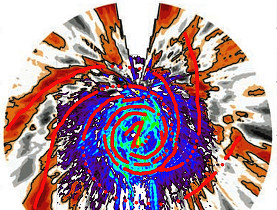Secrets of the Milky Way are revealed

A team of scientists, including one from Zurich University, has uncovered the true structure of the Milky Way using infrared technology.
The researchers were able to draw a complete map of the galaxy’s unique spiral arms, confirming that there are four of the structures. The breakthrough could help other scientists engaged in the search for dark matter.
Until now, the centre of the Milky Way has evaded observation because it is obscured by clouds of dust. But the use of infrared light directed from a satellite enabled the team to peer behind the obstruction.
By lifting the curtain, the team could determine the exact distribution of stars and calculate the flow of gases to draw up a complete picture of the spiral arms. Two arms protrude from a central bar shaped mass of stars and each divides into two additional arms further away from the centre.
The scientists were also able to explain why one of the outer arms deviated from the expected course in a spiral galaxy. This has now been put down to the gravitational pull of the central bar structure.
The model also confirmed that core of the galaxy was symmetrical, as previously believed.
Dark matter hunt
Peter Englmaier of the institute of theoretical physics at Zurich University was one of the chief architects of the mapping process, along with Martin Pohl from Iowa State University and Nicolai Bissantz of Ruhr University in Bochum, Germany.
The team is in contact with scientists in France who could use the new map to track down and analyse the composition of the mysterious and invisible dark matter thought to make up much of the universe.
“Dark matter is thought to emit gamma rays as it decays. Scientists are trying to pinpoint dark matter in the Milky Way by tracking the distribution of these gamma rays,” Englmaier told swissinfo.
“They can use our map to screen out what is being produced naturally from what is coming from dark matter.”
The Milky Way, which contains our own solar system, is the most studied galaxy in the universe as others are too far away to observe accurately.
Scientists believe that studying our own galaxy could help interpret the structure and composition of others.
Collision course
A separate study by the Harvard-Smithsonian Center for Astrophysics has found that the Milky Way may be 15 per cent wider and contain 50 per cent more mass than previously thought.
The researchers were able to draw up a three dimensional map of the galaxy by calculating the position of stars at different points in the Earth’s orbit around the sun.
They used the new information to calculate that the Milky Way is spinning around its centre at nearly 100,000 miles per hour faster than previously estimated. This would mean the Milky Way could crash into the neighbouring Andromeda galaxy sooner than expected.
But the predicted collision date is thought to be at least two to three billion years from now.
swissinfo, Matthew Allen in Zurich
The Milky Way is one of billions of galaxies thought to exist in the known universe and contains our own star system.
The centre of the Milky Way is a disc with a central bulge dominated by a bar shaped formation of stars. Two spiral arms of stars stretch out from the bar and split into two further arms away from the core.
Scientists believe that the very centre of the galaxy is dominated by a massive black hole.
Our solar system, containing the Earth and the Sun, can be found on the galaxy’s Orion arm. The Sun is situated about 25,000 light years from the galactic centre.
The Milky Way is a giant spiral galaxy located next to the Andromeda galaxy.
More than 130 countries are celebrating 2009 as the International Year of Astronomy with events and activities designed to generate interest in the universe.
Launched by the International Astronomical Union and Unesco, the campaign officially begins with an opening ceremony in Paris on January 15-16.
For one event, groups in more than 30 countries at more than 150 venues will help amateur stargazers set up telescopes on pavements as well as in science centres to let passers-by observe the sun using special safety equipment.
Another project, 365 Days of Astronomy, will publish one podcast per day over the entire year. The episodes will be written, recorded and produced by people around the world.

In compliance with the JTI standards
More: SWI swissinfo.ch certified by the Journalism Trust Initiative













You can find an overview of ongoing debates with our journalists here . Please join us!
If you want to start a conversation about a topic raised in this article or want to report factual errors, email us at english@swissinfo.ch.